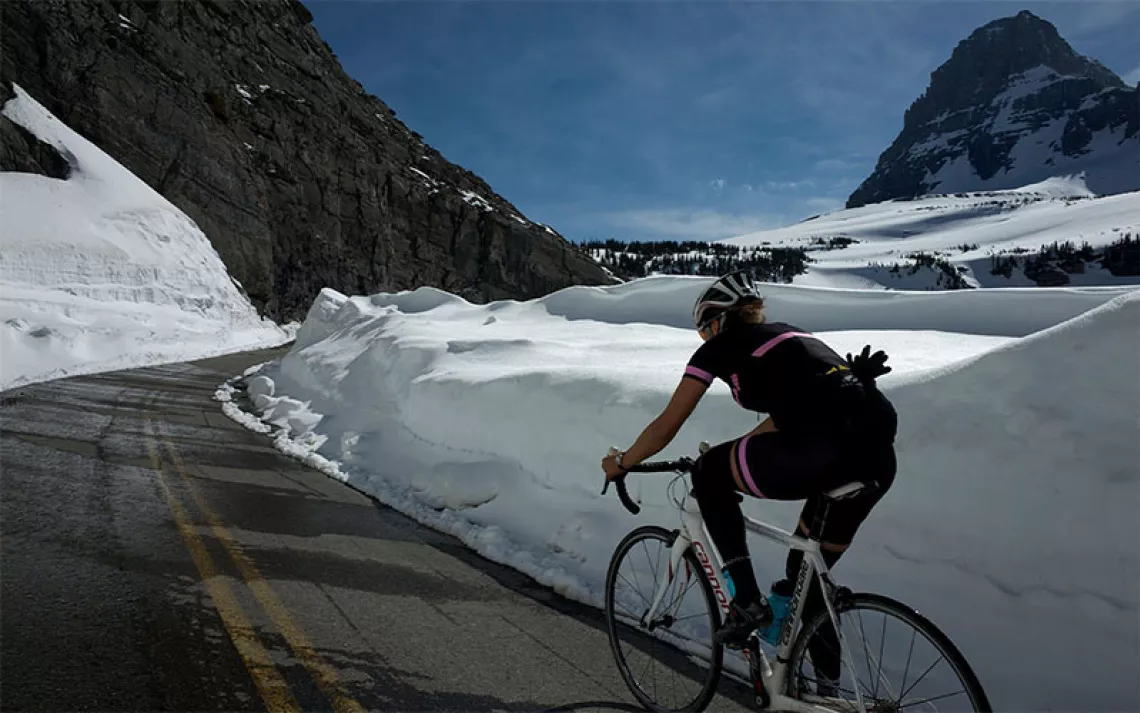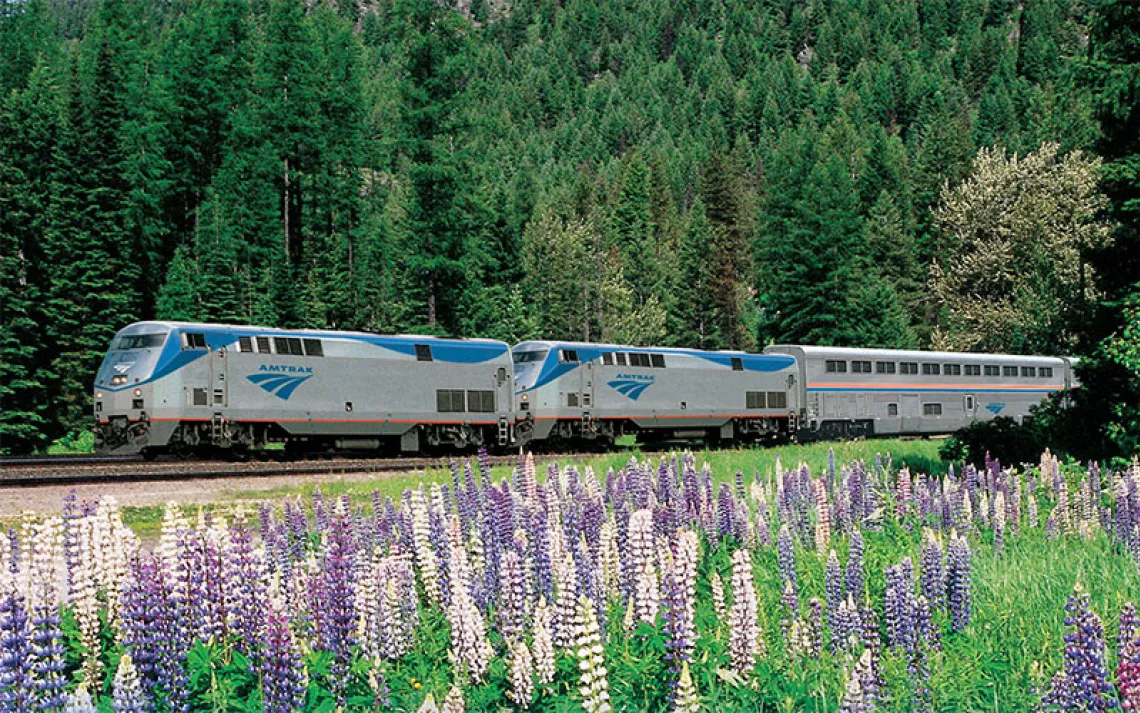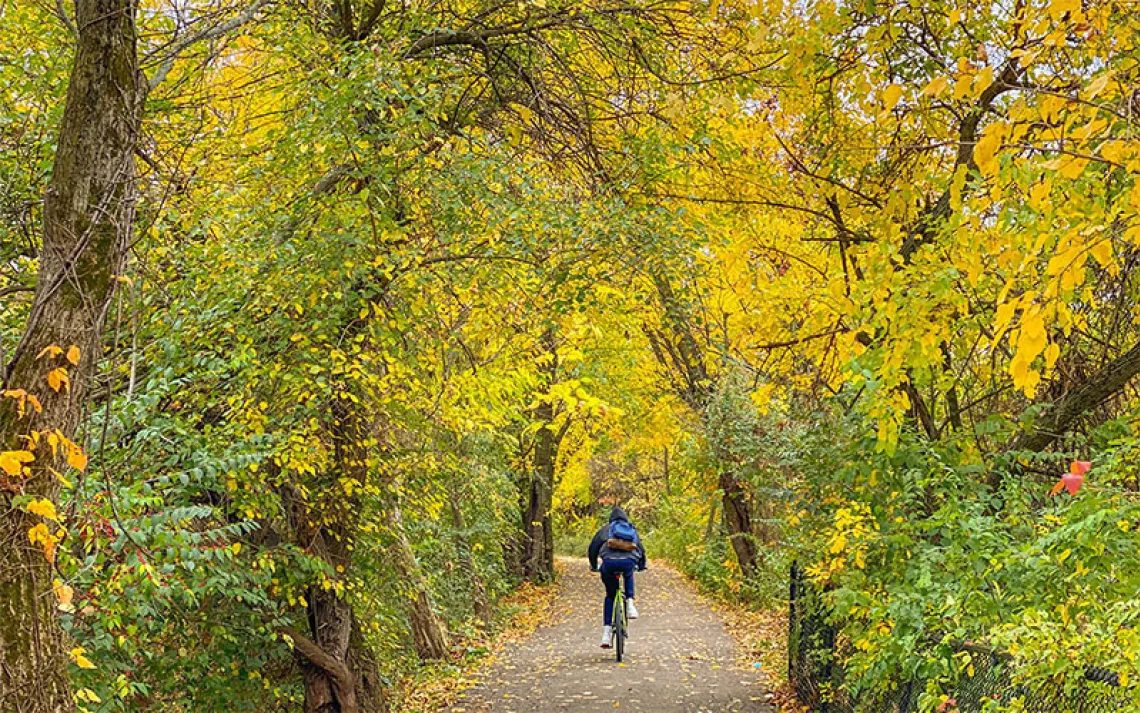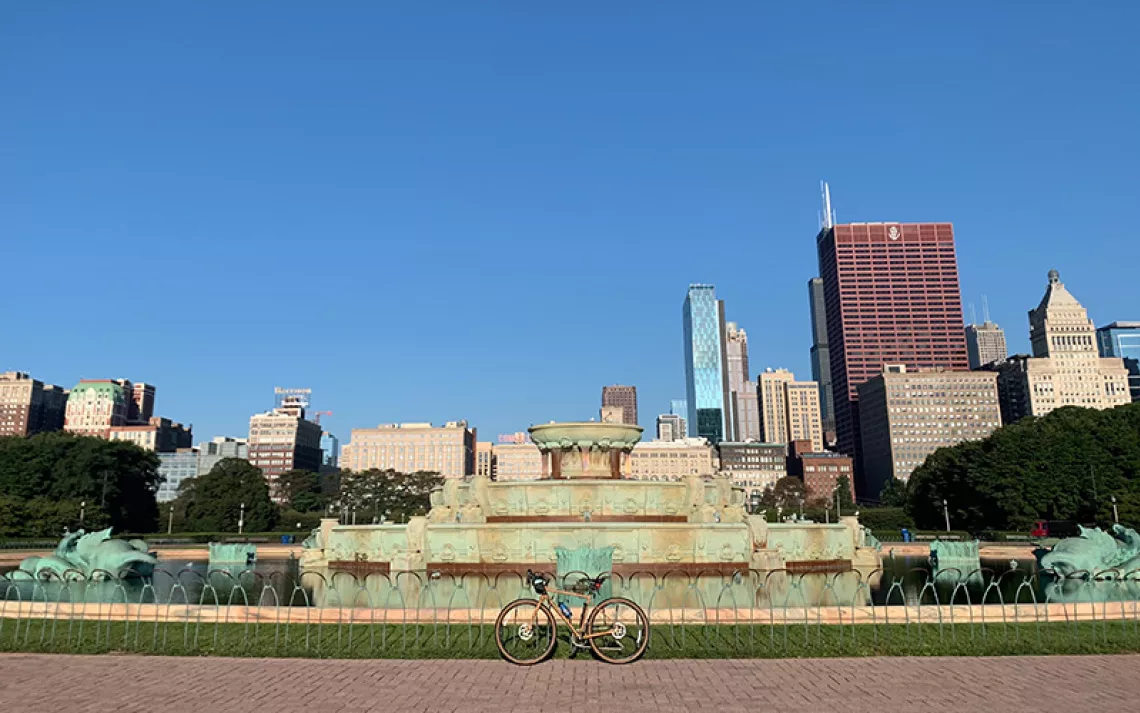Flathead Guardians
Conservationists, the Olympics, and an indignant porcupine keep mountaintop-removal coal mining out of a wildlife paradise
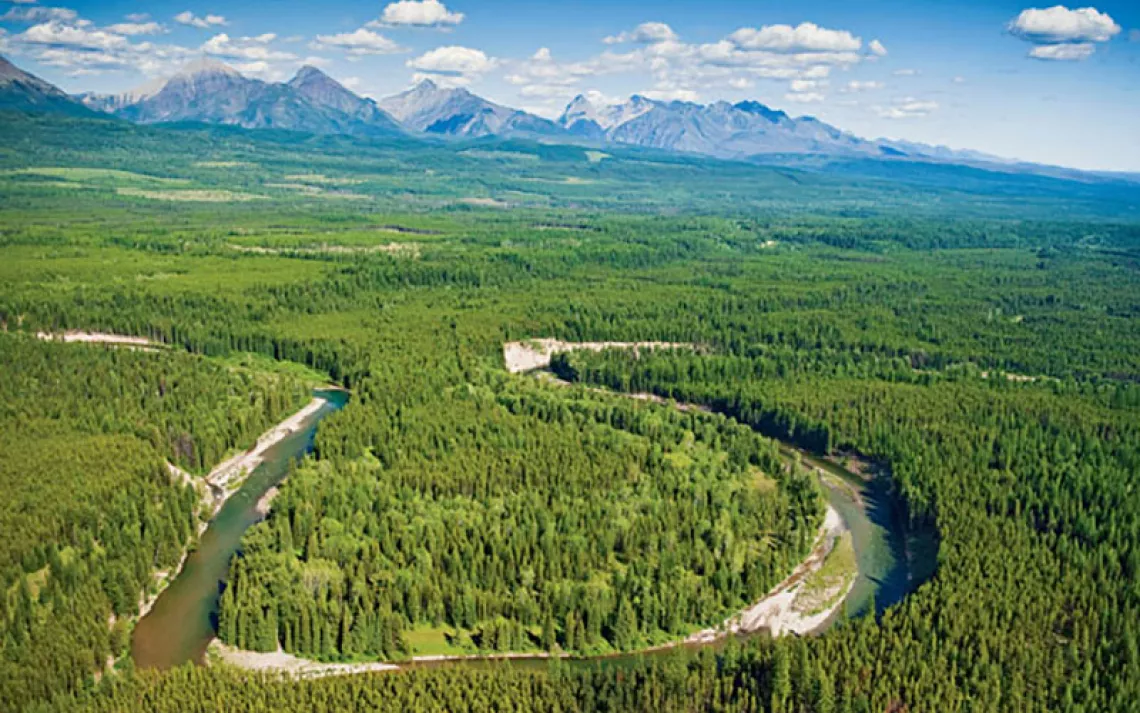
British Columbia's Flathead Valley, mountaintops intact. | Photo by Garth Lenz
MOUNTAIN BIKING THE LAST UNINHABITED major valley in southern Canada involves many potential hazards. Lightning strikes and grizzly bear encounters we'd thought of. Intransigent porcupines, not so much. But there it stood, blocking our path, black eyes staring us down, like a quill bomb at the moment of exploding. Grabbing our brake levers, my friend Greg and I stopped and stared back. What could we do? Anyone who's ever plucked quills out of a dog's nose will tell you not to tangle with a creature wearing a coat of spears. But after we'd sweated up this unnamed mountain in British Columbia on the last day of our trip, turning around was not an option. Thus, this impasse in the wilderness.

Greg Peters paddles with gusto to avoid being swept under a massive log pile on the Flathead River. | Photo by Aaron Teasdale
The Flathead Valley, split by the U.S.-Canadian border, is as wild as they come. Its southern half stretches into the western reaches of Montana's Glacier National Park. Its northern half, in British Columbia, is even more isolated; there's no official border crossing from the States, and it's a long drive over rugged mountain roads from anything resembling civilization. The Flathead has the densest concentration of grizzly bears in inland North America, and it's where wolves first crossed the border to reintroduce themselves into the American Rockies in the 1980s. With its rare, undisturbed valley bottom and confluence of alpine, coastal, and prairie ecosystems, the Flathead is a showcase of plant and wildlife diversity.
But there's a catch: That diversity is not limited to fangs and fireweed. Stocked with coal, natural gas, oil, and massive gold deposits, the valley has been threatened by wholesale industrial development for decades. We'd cycled past the warning signs: old drill-pad test sites and the exploratory tracks in the Flathead's many side valleys that make this such a prime venue for multiday biking adventures. In this age of unrelenting resource extraction, it's a minor miracle that B.C.'s 600-square-mile portion of the Flathead Valley isn't an industrial nightmare of throbbing gas wells and vast open-pit mines.

Sign up to receive Sierra News & Views
Get articles like this one sent directly to your inbox weekly.
With this action you affirm you want to receive Sierra Club communications and may vote on policy designated by the Sierra Club Board.
ACTIVISTS WITH THE SIERRA CLUB BC and Friends of Flathead are doing their best to keep that miracle alive. Meanwhile, we wanted to experience it ourselves. "The adventure starts when you leave the car," Greg said as we pedaled away from his truck at an abandoned international border crossing by the Flathead River. On cue, a bull elk bounded across the road ahead of us. Wildlife biologist John Weaver has described this valley as the single most important basin for carnivores in the Rocky Mountains; judging from the profusion of droppings we dodged on the road, we can confirm that the animals were eating well. After a dozen miles, with our camping gear and five days' worth of food rolling behind us in single-wheel bike trailers (a big improvement on panniers), we pulled up to a grassy riverside spot, pitched our mesh tents under a clear sky, and fell asleep to the sounds of rushing water.
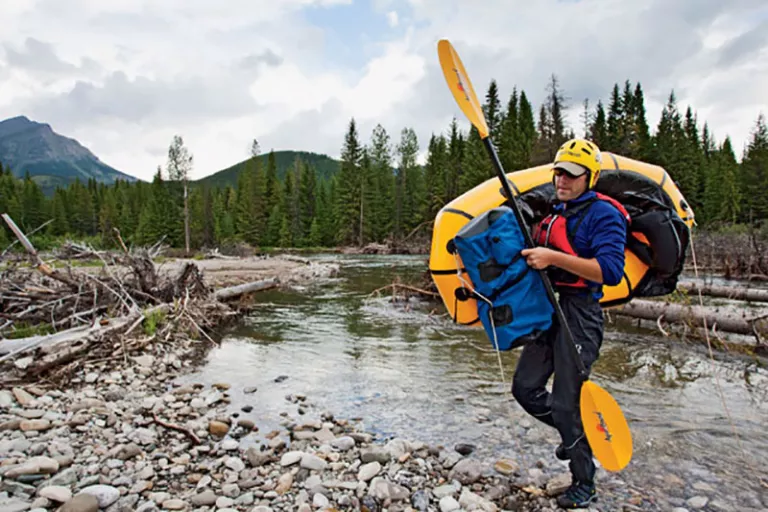
Some river-spanning logjams required portaging. | Photo by Aaron Teasdale
Our plan for the trip was simple: Bike up the valley as close to the Flathead's headwaters as possible, stash the bikes in the woods for later retrieval, jump in our inflatable "packrafts," and let the river carry us back to the truck. Our camping kit—one-pound sleeping bags, tiny tents, and a single titanium pot to go with our soda-can stove—was what an ultralight backpacker might use, with a few bike tools thrown in. The Canadian Flathead doesn't have much in the way of extended hiking trails, so we'd figured that mountain bikes and rafts would be the perfect vehicles to explore it at human speed.
In 2006, the Cline Mining Corporation proposed its own simple plan: to extract vast amounts of coal from the Flathead River's headwaters via mountaintop removal—the same crude method that is mauling Appalachia. This was no idle threat, given that the Elk Valley, the Flathead's northern neighbor, hosts five mountaintop-removal coal mines, including one just three miles from the Flathead watershed.
The valley may have been saved by the 2010 Winter Olympics. Under intense pressure from conservationists in the run-up to the Games, the B.C. government surprised everyone by announcing a temporary ban on all mining and oil and gas development in the Flathead. The Sierra Club and others are pushing for stronger protections and even a national park designation, but for the moment, Flathead coal mining has been averted.
ON OUR TRIP'S SECOND DAY, we pedaled picnic-ride fashion along the river through July sunshine, iridescent dragonflies winging across the road, butterflies congregating on the poop piles. Neither of us had paddled the river on the Canadian side, so we studied the serpentine waterway for dangerous obstacles whenever views presented themselves. A passing hunter assured us that the river was runnable as long as we kept an eye out for downed trees. He said he was glad for the mining ban but less enthusiastic about the area becoming a national park. "Shoot, right now you can count on your hand the number of people that go by here in a day," he said. "You turn it into a park"—he dismissively waved his hand—"pffft."
As we rode on up the valley, it was hard not to sympathize with his perspective—we could have this place all to ourselves. The only other people we saw were a father and son on four-wheelers, who were impressed by our motorless gumption. Near the head of the valley, the mountains closed in, and the road degenerated (or, in our eyes, improved) into a rough trail. Wet patches preserved the tracks of passing wolves. Wildflowers blanketed the roadsides. Yes, we agreed, the Flathead was mighty fine just the way it was.
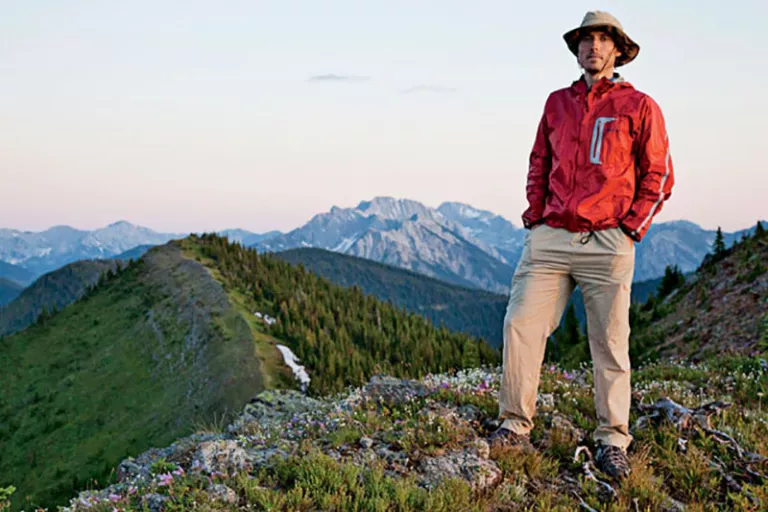
The author standing atop the once-imperiled mountain of coal. | Photo by Aaron Teasdale
We camped that night in a sprawling meadow close to the river—more of a creek this high in the valley—after riding 34 miles. This was our put-in for three days of paddling the packrafts back to our starting point at the border. The rafts weigh only five pounds and roll up to the size of a two-person tent, so the only other equipment we needed were PFDs, collapsible paddles, and helmets. We carried our feathery camping gear in lightweight drybags lashed to our bows.
We wanted water and we got it. A furious lightning storm moved in that night, strafing and strobing through the darkness. The next morning, we inflated our boats and pushed off into the river under a steady rain, which quickly tempered my neophyte's enthusiasm at floating the wilderness.
Three hours later, we were carrying our boats through a shallow, braided channel. It had been raining steadily, and I had water in places I hadn't realized could get wet. "I think it's going to be a wet and rainy one today," Greg said.
"What gives you that idea?"
"I can just feel these things," he replied sagely. "After all, I am part Native American."
After two more drenching hours, we dragged the boats ashore on a gravel bar, where, desperate to get warm, we performed a calisthenic routine worthy of Madonna. Water continued to fill the sky as we put back in, pouring over forest and mountain and two small humans bobbing through the valley bottom. American dippers zoomed over the water like miniature jet planes, muddy beaver trails led up the riverbank, trout surfaced in deep pools, and a goshawk lifted from a snag at the water's edge. As for signs of humanity, we were it, navigating a lost world of mist-smothered mountains, carried on by the cold, cold river.

Unloading the bikes a mile from the U.S. border, where the Flathead River is slowly devouring the road. | Photo by Aaron Teasdale
When we finally took off the water later that day, our core temperatures were getting dangerously cold. It took a full nerve-wracking hour to get a fire going under a spruce tree at camp. We nursed it worshipfully, our existence reduced to elemental connections with fire and water.
It was two o'clock the following afternoon when we finally got our gear dried and were ready to push off into the current again. I was still learning to read the water, occasionally paddling with adrenalized vigor to avoid fallen trees that lanced out from the bank and clustered in ragged piles on dog-leg bends. Get pinned by the current against—or under—a "strainer" and it could be your final mistake.
Happily, our packrafts proved perfectly suited to the river, and our gear functioned as stabilizing ballast. The sun emerged from floating cumulous towers as the upper valley gradually opened wide around us, with shreds of clouds clinging to the peaks on either side. Just as we were starting to feel like it might be the best day ever, thunderheads massed over the western mountains. "An ill wind blows across our bow," Greg boomed.
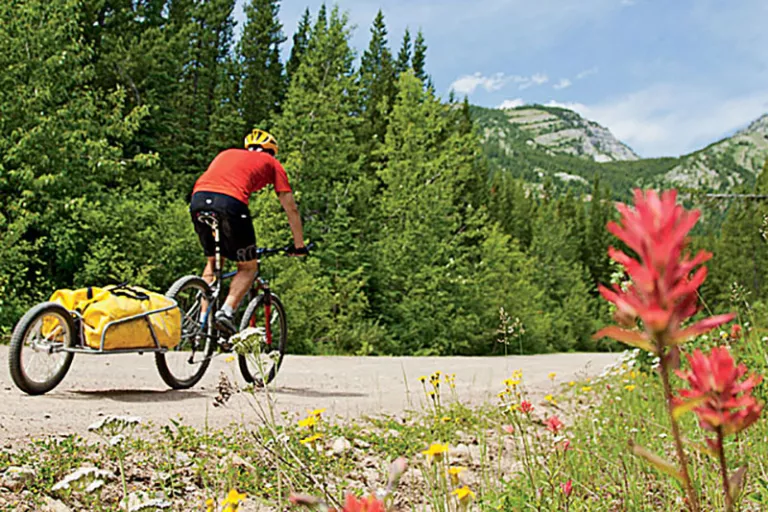
In an area with few hiking trails, a mountain bike and trailer are the way to go. | Photo by Aaron Teasdale
We laughed, but not for long. First came lightning, followed by cold, pounding rain. My anxiety mounted; I wasn't ready for another hypothermia party. Then, down the river corridor, where forested ridges stacked in fading layers to the distant sky, I saw an osprey flapping its wings against the luminescent gray of the clouds. It was holding its position, eyes fixed on the water below. I stopped paddling and stared. That supremely focused raptor reminded me of an old lesson I'd forgotten: to not resist what I cannot change. "The river will take you where you need to go," Greg had said when he taught me how to read the current. So I let it—let the current pull me onward, let the rain run down my shoulders. I watched the spruce and cottonwoods and beaver-chewed stumps slip by along the shore and the reddish summits of the Clark Range to the east as the clouds gradually lifted. It's almost embarrassing to report that the rain stopped and gave way to a vast double rainbow. Neither of us said much as we floated into twilight. We made camp on the river cobble near fresh wolf tracks in the sand.
Our alarm clock the next morning was a chorus of chickadees, kinglets, and thrushes beneath a clear, robin-egg sky. We soon realized that we had been mistaken the other afternoon, because this was clearly the best day that has ever been had on a river. I was at home on the water now, in total control of my tiny boat, casually skirting fallen trees like a skier carving down a slope. As the afternoon lengthened and tributaries spilled in from the mountains on either side, the Flathead widened into a true river. Rain was falling in a patchwork throughout the valley from spectacular, billowing clouds, but we were spared, having paid our dues. Mergansers led us down rapids, and bank swallows darted overhead from cutbank nest-holes. The current spun us in peaceful pirouettes as we contemplated the clouds in that relaxed time zone one enters only after several days in the wilderness. We were a part of the river now. All that existed was the sun, the birds, the mighty cottonwoods and spruce, and the cold, pure flow of water carrying us down valley.
WE REACHED GREG'S TRUCK LATER THAT DAY. We could have headed straight home, but there was one more place I wanted to visit. So the next morning, after retrieving our bikes, we drove high into the northern reaches of the valley, stopped at a signless dirt road, and began to climb. Though the sun was warm on our skin and the road was lined with a rainbow of wildflowers, the scraps of deer hide we passed and the jawbone of a snowshoe hare embedded in the road surface reminded us this was no Disney wonderland. Then we pedaled by a pile of grizzly bear scat of disconcerting diameter. Then four more.
After hours of steep climbing, with views of striated peaks spiking the sky to the south, we drank from a spring at 6,000 feet surrounded by blooming bear grass. Finally, as we gained a ridge with a view to the north, we saw it—the northernmost mountain in the range, unnamed and more humble than some of its showy spear-tipped neighbors, with matching, wooded summits above and the upper Flathead River curling around its feet. Greg had never climbed this high on a mountain bike. "Don't make fun of me," he said, "but I'm feeling pretty badass right now."
A few turns later on the rocky track, we met the porcupine. As it sized us up, I saw it as a kind of forest guardian, a real-life Lorax with a pricklier profile. It seemed to determine that we posed no threat and then waddled into the forest below. We continued into a rocky, skid-trail labyrinth, muscled up the mountainside, and eventually found our way to the cleavage between the twin summits.
Coal was everywhere. In open piles at our feet, in exposed seams in the rock. Had Cline's mining plans gone through, these mountains, the forest we'd just ridden through, the spring we'd drunk from, all the porcupine's protectorate would be a vast open pit. We climbed to the northernmost peak, past shoulder-high whitebark pine, for a dinner amid summits stacked like shark's teeth to every horizon. As the setting sun lit the eastern peaks, the river we'd just paddled became a strip of silver wending through blue shadows.
Greg pitched his tent in a sheltered saddle. "I'm going to see what it's like on the other peak," I said. Patches of snow clung to tree shadows and pikas scampered across talus as I hiked through a carpet of glacier lilies. At the top, I cleared a space just big enough for my sleeping bag. I wanted to spend the night on the summit of the mountain that almost wasn't. Exhausted from the day's effort, I quickly fell asleep—only to be jolted awake sometime later by a howl cutting through the night, then a crazy baying that seemed to fill the entire valley. Tonight, the Flathead was still wild.
 The Magazine of The Sierra Club
The Magazine of The Sierra Club
